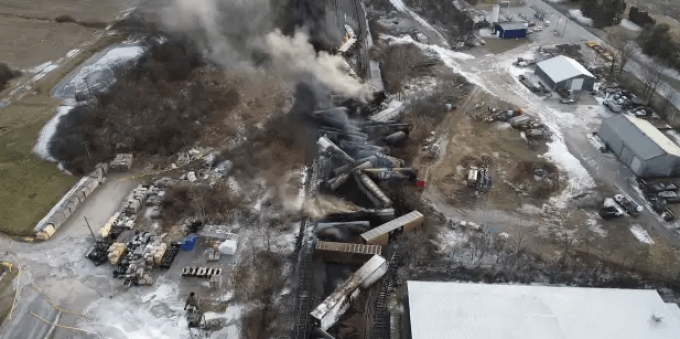Intermodal ups and downs in a mixed first half for North American railroads
North America’s intermodal operators experienced something of a mixed bag over the three months to ...

The Norfolk Southern train crash in East Palestine, Ohio on 3 February may have derailed the Class I railways’ efforts to reduce crews – amid more likely fallout from the incident.
The catastrophe, in which 38 rail cars derailed, including 11 carrying hazardous materials, turned into a platform for political grandstanding last week.
Former US president Trump steamed into town to lambast the Biden administration for “betraying” locals with an ’inadequate response’. He promised to pay for cleaning supplies for the spill ...
Asia-USEC shippers to lose 42% capacity in a surge of blanked sailings
USTR fees will lead to 'complete destabilisation' of container shipping alliances
New USTR port fees threaten shipping and global supply chains, says Cosco
Outlook for container shipping 'more uncertain now than at the onset of Covid'
Transpac container service closures mount
DHL Express suspends non-de minimis B2C parcels to US consumers
Zim ordered to pay Samsung $3.7m for 'wrongful' D&D charges
Flexport lawsuit an 'undifferentiated mass of gibberish', claims Freightmate


Comment on this article